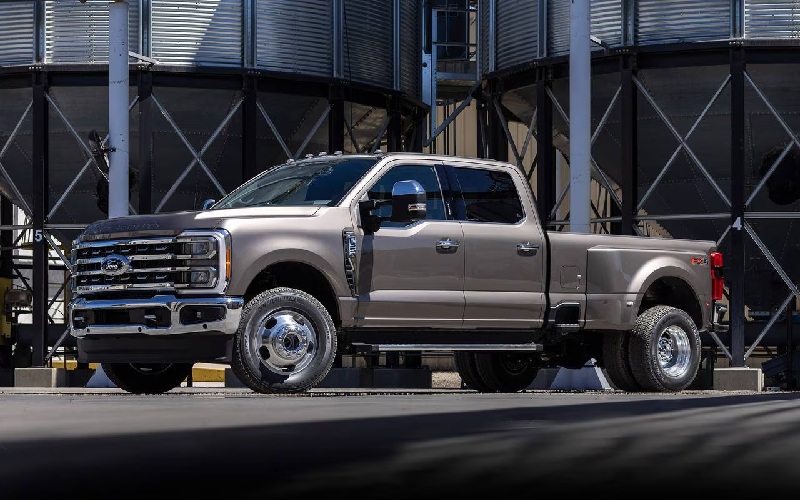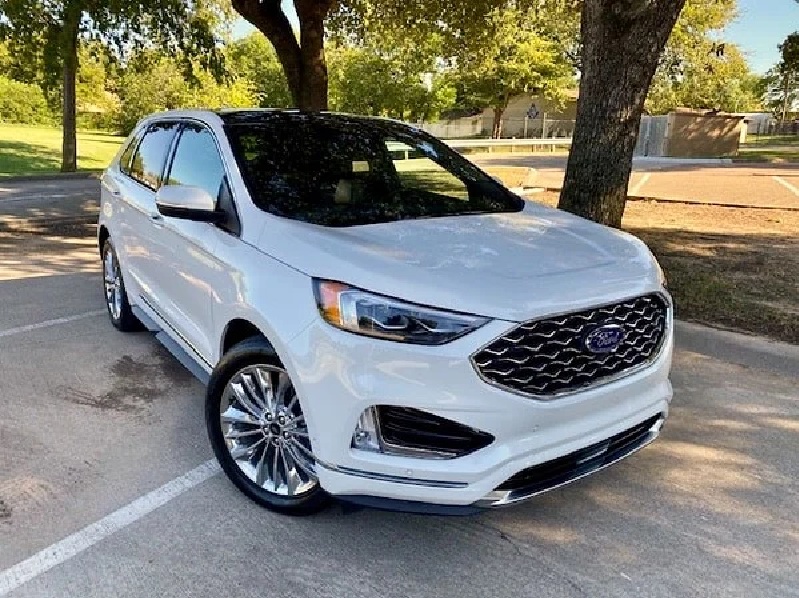2025 Ford F-150 Lightning: Battery Options for Performance
The Ford F-150 Lightning represents a significant evolution in the electric pickup truck segment, building upon the success of earlier models with enhanced battery technology, increased range, and improved performance characteristics. As the electric vehicle market matures, Ford has expanded the battery options available for the F-150 Lightning to meet diverse customer needs, from work-focused […]
The Ford F-150 Lightning represents a significant evolution in the electric pickup truck segment, building upon the success of earlier models with enhanced battery technology, increased range, and improved performance characteristics. As the electric vehicle market matures, Ford has expanded the battery options available for the F-150 Lightning to meet diverse customer needs, from work-focused applications to premium long-range variants.

Standard Range Battery Pack
The entry point to the F-150 Lightning lineup features the Standard Range battery pack, which balances affordability with practical everyday functionality.
Technical Specifications
The Standard Range battery pack includes:
- Lithium-ion chemistry with nickel-manganese-cobalt (NMC) cathodes
- 98 kWh usable capacity
- 400-volt architecture
- Liquid cooling and heating system
- Integrated battery management system
- Range of approximately 386 kilometers under ideal conditions
Ford has implemented refined cell chemistry that improves energy density by approximately 8% compared to previous models, allowing for the increased range without changing the physical dimensions of the battery pack.
Performance Characteristics
The Standard Range battery powers dual electric motors with a combined output of 340 kW (452 horsepower) and 1,050 Nm of torque. This configuration provides a 0-100 km/h acceleration time of approximately 4.8 seconds, impressive for a full-size pickup truck.
Towing capacity with the Standard Range battery is rated at 3,493 kg, with a payload capacity of approximately 816 kg. These figures make the Standard Range model suitable for light-to-medium duty applications and recreational towing.
Charging Capabilities
The Standard Range battery supports various charging options:
- 11.3 kW onboard charger for Level 2 (240V) charging, providing a full charge in approximately 10 hours
- DC fast charging at up to 150 kW, enabling a 15-80% charge in approximately 44 minutes
- Level 1 (120V) charging for emergency situations, adding approximately 6 kilometers of range per hour
The battery has a charge port located on the driver’s side front fender, with an illuminated ring that indicates charging status and current battery level.
Extended Range Battery Pack
The Extended Range battery pack serves as the middle option in the lineup, offering a significant boost in range and capability for customers with more demanding requirements.
Technical Specifications
The Extended Range battery features:
- Enhanced lithium-ion cells with higher energy density
- 131 kWh usable capacity
- 400-volt architecture
- Advanced thermal management system with improved efficiency
- Range of approximately 515 kilometers under ideal conditions
The latest model incorporates revised cell packaging that improves cooling efficiency by 12%, allowing for more consistent performance during repeated fast charging sessions and in extreme temperature conditions.
Performance Enhancement
With the Extended Range battery, the dual-motor powertrain output increases to 420 kW (563 horsepower) while maintaining the same 1,050 Nm of torque. This results in a slightly quicker 0-100 km/h time of approximately 4.5 seconds.
Towing capacity increases substantially to 4,536 kg, with a payload capacity of approximately 885 kg. This configuration is well-suited for contractors, recreational users with larger trailers, and those who regularly haul substantial loads.
Charging Infrastructure Compatibility
The Extended Range battery includes enhanced charging capabilities:
- 19.2 kW onboard charging capability (where home electrical service permits), reducing Level 2 charging time to approximately 8 hours for a full charge
- DC fast charging at up to 155 kW, enabling a 15-80% charge in approximately 50 minutes
- Bidirectional charging capabilities for vehicle-to-home (V2H) power during outages
The increased capacity means that on a DC fast charger, the Extended Range battery can add approximately 125 kilometers of range in 15 minutes under ideal conditions.
Max Range Battery Pack
New for the latest model year, the Max Range battery pack represents the Ford flagship offering for the F-150 Lightning, prioritizing maximum driving distance between charges.
Advanced Battery Technology
The Max Range battery incorporates:
- Next-generation lithium-ion cells with silicon-enhanced anodes
- 155 kWh usable capacity
- Semi-solid-state battery technology in select cell groups
- Dual-layer cooling system for optimized thermal management
- Range of approximately 610 kilometers under ideal conditions
This pack utilizes the latest Ford battery technology, with cells that feature approximately 15% higher energy density than those in the Extended Range pack, while maintaining similar physical dimensions through innovative packaging.
Maximum Performance Delivery
The Max Range battery powers an enhanced dual-motor system with a combined output of 433 kW (580 horsepower) and 1,050 Nm of torque. Despite the additional weight of the larger battery pack, acceleration remains impressive at approximately 4.4 seconds from 0-100 km/h.
The towing capacity with this configuration reaches 5,216 kg, while payload capacity is approximately 825 kg (slightly lower than the Extended Range due to the heavier battery pack).
Advanced Charging Technology
The Max Range battery features the most advanced Ford charging capabilities:
- 19.2 kW onboard charger as standard equipment
- DC fast charging at up to 175 kW, enabling a 15-80% charge in approximately 55 minutes
- Enhanced power export capabilities of up to 9.6 kW through multiple 120V and 240V outlets
With this battery option, the F-150 Lightning can serve as a robust mobile power station, capable of powering an entire work site or home for multiple days during outages.
Battery Protection and Durability Features
All F-150 Lightning battery options incorporate extensive protection systems to ensure longevity and reliable performance.
Physical Protection Measures
The battery packs are in high-strength cases designed to withstand severe impacts:
- Military-grade aluminum shell
- Reinforced structure with crash-absorption zones
- Waterproof sealing rated for submersion up to 91 cm for 30 minutes
- Underbody shield made from composite materials
These protective elements safeguard the battery during off-road use, collisions, and adverse weather conditions, while strategic placement between the frame rails provides natural protection from side impacts.
Thermal Management Systems
Temperature control is critical for battery performance and longevity. The Lightning features:
- Liquid cooling system with improved flow dynamics
- Active heating elements for cold-weather operation
- Intelligent thermal preconditioning when navigating to charging stations
- Temperature sensors distributed throughout the pack
The system maintains optimal battery temperature between 15°C and 35°C, even when ambient conditions range from -30°C to 50°C.
Warranty and Longevity Considerations
Ford has demonstrated confidence in their battery technology through comprehensive warranty coverage and design features focused on longevity:
- 8-year/160,000-kilometer warranty against defects and excessive degradation
- Battery design targeting less than 20% capacity loss over 10 years of typical use
- Over-the-air update capability for battery management software optimization
- Built-in reserve capacity that remains inaccessible to prevent deep discharge
These measures help ensure that the F-150 Lightning battery maintains reliable performance throughout the vehicle’s operational life.
Intelligent Battery Management System
The F-150 Lightning features the most advanced Ford Battery Management System (BMS) to date, incorporating artificial intelligence and predictive analytics.
Adaptive Charging Protocols
The BMS continuously optimizes charging behaviour:
- Adjusts charging rates based on battery temperature, state of charge, and cell health
- Implements cell balancing during charging to ensure uniform wear
- Varies maximum charge levels based on driving patterns and needs
- Adapts fast-charging profiles to minimize degradation
For frequent short-trip users, the system may limit maximum charge to 80-90% to extend battery life, while automatically enabling 100% charges before planned long journeys.
Intelligent Range Prediction
The latest model introduces enhanced range prediction capabilities:
- Considers topography of planned routes
- Accounts for historical energy usage patterns
- Factors weather forecasts into range calculations
- Adjusts estimates based on trailer profiles when towing
This intelligent system provides drivers with more reliable range estimates, reducing anxiety and allowing for better trip planning.
Integration with Vehicle Systems
The BMS communicates with multiple vehicle systems to optimize performance and efficiency:
- Coordinates with climate control to minimize battery draw
- Interfaces with navigation to plan charging stops
- Works with regenerative braking to maximize energy recovery
- Manages power distribution between accessories and propulsion
This holistic approach ensures that all vehicle systems work in concert to maximize range and battery health.
Five Facts About the 2025 Ford F-150 Lightning Battery System
- The largest Max Range battery pack contains enough energy to power an average household for approximately 10 days when used with a proper home integration system.
- During development testing, Ford subjected the battery packs to more than 150,000 simulation cycles of extreme temperature fluctuations, from -40°C to +60°C, far beyond what most owners will ever experience.
- The silicon-enhanced anode material used in the Max Range battery pack can theoretically absorb up to 10 times more lithium ions than traditional graphite anodes, contributing to its higher energy density.
- Each battery pack contains over 1,800 individual temperature sensors that monitor conditions 100 times per second, creating a detailed thermal map that helps optimize performance.
- The protective casing around the battery packs underwent ballistic testing with various projectiles to ensure durability, including tests with 2 cm gravel impacts at highway speeds.
Questions and Answers
How much does the battery weight affect the performance of the F-150 Lightning?
- The battery pack represents a significant portion of the vehicle’s weight, ranging from approximately 725 kg for the Standard Range to 950 kg for the Max Range pack. Despite this weight, this EV pickup truck offers better acceleration than many conventional models due to the immediate torque delivery of electric motors. The low center of gravity created by mounting the heavy battery between the frame rails actually improves handling characteristics compared to conventional trucks. However, the additional weight does impact efficiency, particularly during highway driving, where aerodynamic drag combines with mass to increase energy consumption.
What happens to the F-150 Lightning battery in extremely cold weather?
- In extreme cold weather below -15°C, all electric vehicles experience some range reduction. However, the latest model includes several features to mitigate this impact. The active thermal management system can preheat the battery pack while plugged in, using grid power rather than battery energy. When driving, the system continuously warms the battery to maintain optimal operating temperature. Even in temperatures as low as -30°C, owners typically experience range reductions of 30-40% rather than the 50%+ reductions seen in earlier EV generations. The truck also includes a heat pump system that efficiently warms the cabin without heavily draining the battery.
How long will the battery last before needing replacement?
- EV batteries are designed for exceptional longevity, with Ford engineering targeting 10+ years of service before reaching 80% of original capacity. This is achieved through conservative charging limits (the displayed “100%” actually leaves a buffer at the top and bottom of the actual capacity), sophisticated thermal management, and intelligent charging algorithms. Real-world data from earlier model years suggests that under typical usage patterns, owners can expect less than 2% capacity degradation per year. The battery is designed as a lifetime component for most owners, with the 8-year/160,000-kilometer warranty providing additional peace of mind against premature failure or excessive degradation.
Can the F-150 Lightning battery be upgraded after purchase?
- Unlike software features that you can add via over-the-air updates, the physical battery pack cannot be upgraded from one capacity to another after purchase. The different battery options require distinct structural mounting systems, cooling configurations, and power electronics. However, Ford has designed the battery packs to be replaceable if necessary, and future replacement batteries may offer improved technology within the same form factor. The modular design of the pack also allows for individual sections to be replaced rather than the entire unit if only certain cells experience issues, potentially reducing repair costs compared to a complete replacement.
How does towing affect the range of the F-150 Lightning?
- Towing significantly impacts the range, as it does with conventional trucks’ fuel economy. The aerodynamic drag and additional weight of a trailer can reduce range by 30-50% depending on trailer size, weight, and driving conditions. For example, the Max Range battery pack’s 610-kilometer rating might deliver only 305-425 kilometers when towing a 3,500 kg trailer. Ford has implemented several features to help manage this impact, including the Intelligent Range system that learns from previous towing experiences with specific trailers. The onboard trip computer can estimate range more accurately when a trailer profile is selected, and the navigation system can plan routes with appropriate charging stops based on the reduced range expectations.
How does the F-150 Lightning protect its battery during off-road use?
- The battery system includes multiple layers of protection for off-road adventures. The physical protection starts with a 6.35 mm thick shield made of high-strength steel that guards the entire underside of the battery pack. This shield deflects impacts from rocks and other obstacles. The battery casing itself is waterproof and dustproof, meeting IP67 standards that allow for temporary water submersion. The truck includes additional skid plates around vulnerable components, and the battery cooling system features protected routing to prevent damage from debris. The vehicle’s ground clearance keeps the battery pack above most obstacles on typical off-road trails, while the electronic systems monitor for unusual impacts or pressure that might indicate damage to the pack.
What options exist for charging the F-150 Lightning in remote locations?
- For remote locations without established charging infrastructure, this EV truck offers several solutions. The Pro Power Onboard system can be reversed in emergency situations to accept charge from compatible generators, though at a slower rate than dedicated EV chargers. Ford offers a portable charging solution that can connect to 240V outlets commonly found at RV parks and campgrounds. For extended remote use, the F-150 Lightning is compatible with certain solar charging systems that can provide slow charging during daylight hours. Some aftermarket companies also offer range extender solutions—essentially trailer-mounted generators specifically designed to charge EVs in remote locations. These options ensure that the Lightning remains practical even for users who frequently venture beyond the established charging network.


